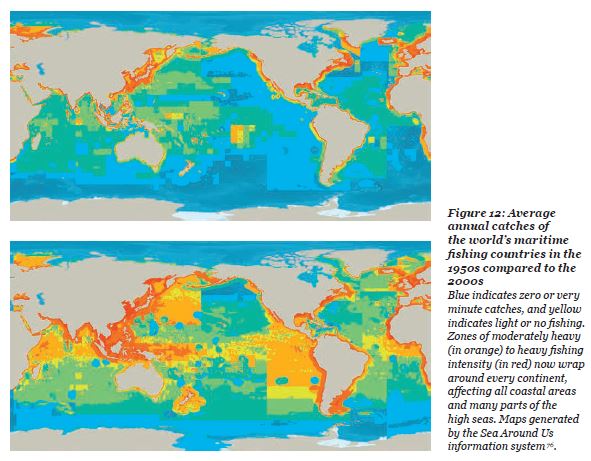Humanity and the way we feed, fuel and finance our societies and economies are pushing nature and the services that power and sustain us to the brink, according to WWF’s Living Planet Report 2018. The report, released today, presents a sobering picture of the impact of human activity on the world’s wildlife, forests, oceans, rivers and climate, underlining the rapidly closing window for action and the urgent need for the global community to collectively rethink and redefine how we value, protect and restore nature.
The Living Planet Report 2018 presents a comprehensive overview of the state of our natural world, twenty years after the flagship report was first published. Through indicators such as the Living Planet Index (LPI) provided by the Zoological Society of London, the Species Habitat Index (SHI), the IUCN Red List Index (RLI), the Biodiversity Intactness Index (BII) and the Sea Around Us fisheries data, as well as Planetary Boundaries and the Ecological Footprint, the report paints a singular disturbing picture: human activity is pushing the planet’s natural systems that support life on earth to the edge.
“Science is showing us the harsh reality our forests, oceans and rivers are enduring at our hands. Inch by inch and species by species, shrinking wildlife numbers and wild places are an indicator of the tremendous impact and pressure we are exerting on the planet, undermining the very living fabric that sustains us all: nature and biodiversity,” said Marco Lambertini, Director General, WWF International.
The LPI, which tracks trends in global wildlife abundance, indicates that global populations of fish, birds, mammals, amphibians and reptiles declined, on average, by 60 per cent between 1970 and 2014, the most recent year with available data.
“Our catch data, for example, is very telling when it comes to looking at the state of fish populations. Our numbers reveal that marine fisheries catches have been declining at a rate of 1.2 million tonnes per year since the mid-90s. This is mostly caused by industrial fleets’ push to fish beyond sustainable levels,” said Daniel Pauly, the Sea Around Us Principal Investigator who, together with Project Manager, Deng Palomares, wrote a section titled “What and how much have we caught?” in the Living Planet Report.
Despite the decrease in fisheries catches, humanity is still extracting over 110 million tonnes of fish and invertebrates from the global ocean every year.
“The expansion of industrial fleets from the top 10 fishing countries, that is China, Peru, Thailand, Russia, the USA, Indonesia, Japan, Chile, India and Vietnam, has created zones of moderately-heavy to heavy fishing intensity around every continent,” Palomares said.
According to the Sea Around Us analysis, the areas that have seen most of the growth in the fishing intensity are located in the southern and eastern parts of the world, with South East Asia leading the way.
“Some fleets have averaged 774,000 tonnes of fish per year. Here, we are talking about industrial fleets, which are responsible for close to 80 per cent of the global catch. Since most of the time they fish in their own or other countries’ exclusive economic zones, they leave almost no fish for artisanal, subsistence and recreational fishers to take and, on top of that, they tend to cause long-term damage in marine ecosystems,” Pauly said.
While highlighting the extent and impact of human activity on nature, the Living Planet Report 2018 also focuses on the importance and value of nature to people’s health and well-being and that of our societies and economies. Globally, nature provides services worth around US$125 trillion a year, while also helping ensure the supply of fresh air, clean water, food, energy, medicines and other products and materials.
Evidence shows that the pro-environment and pro-human development agendas must converge if we are to build a sustainable future for all. The Living Planet Report 2018 highlights the opportunity the global community has to protect and restore nature leading up to 2020, a critical year when leaders are expected to review the progress made on the Sustainable Development Goals, the Paris Agreement and the Convention on Biological Diversity (CBD).
Chapter 4 of the report is inspired by a paper titled ‘Aiming higher to bend the curve of biodiversity loss’ which suggests a roadmap for the targets, indicators and metrics the 196 member states of the CBD could consider delivering an urgent, ambitious and effective global agreement for nature, as the world did for climate in Paris, when they meet at the 14th Conference of the Parties to the CBD in Egypt in November 2018.
The Living Planet Report 2018 is the twelfth edition of WWF’s biennial flagship publication. The report includes the latest findings measured by the Living Planet Index tracking 16,704 populations of 4,005 vertebrate species from 1970 to 2014.





